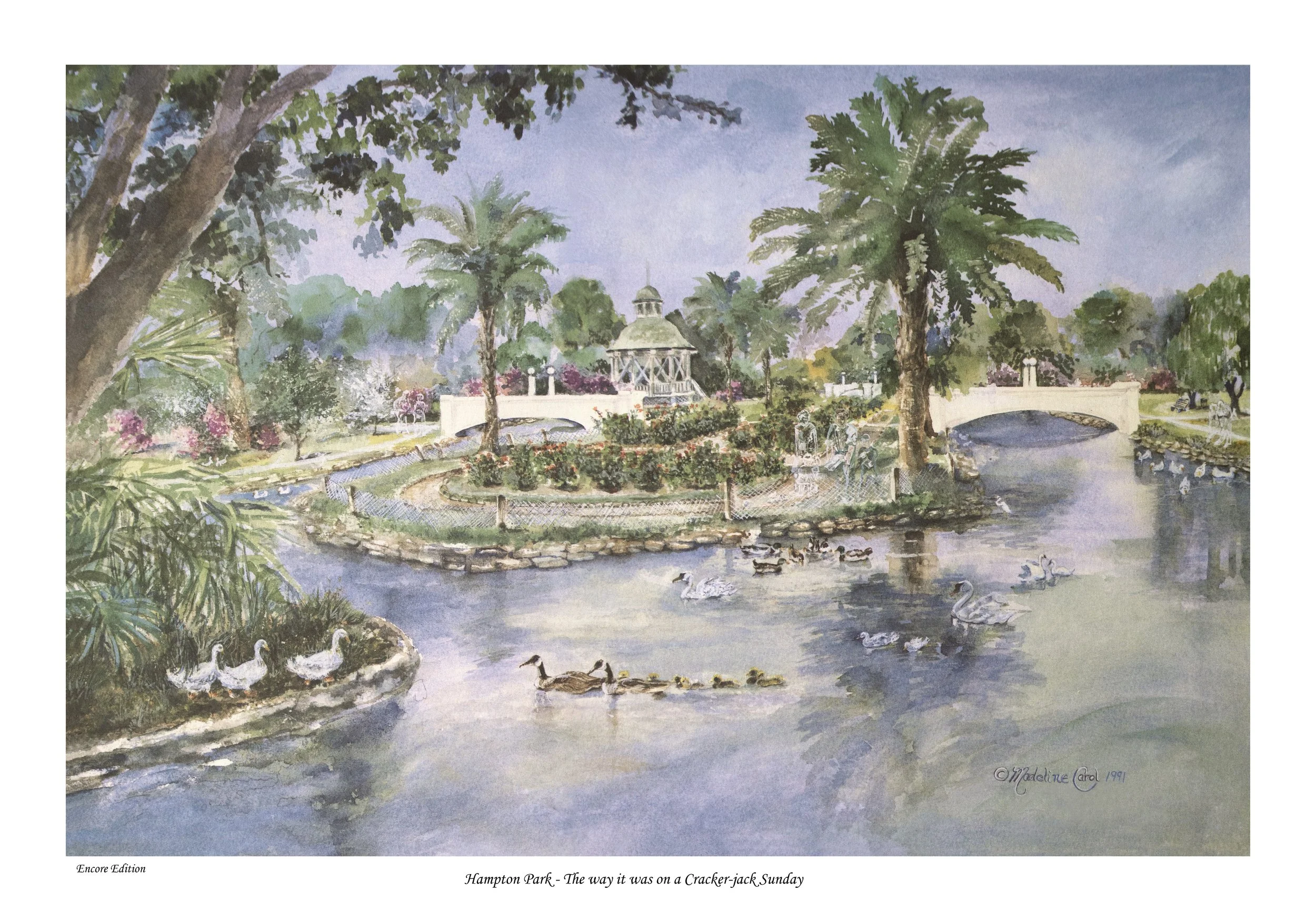 Image 1 of 1
Image 1 of 1


Hampton Park
The existence of Hampton Park predates our memories of its beauties and our experiences there as children and as adults. The land, once the site of an early racetrack, was acquired and used for the West Indian Exposition in 1901 and 1902. The Exposition drew visitors from faraway places, and at its conclusion most of the buildings were removed. The bandstand and lagoons became the center piece of a park created in the city after the Exposition closed. In subsequent years, a zoo was added and many azaleas and other foliage were planted to create an expanse of beauty. With the paving of a circular road, it was not unusual to see cars lining the road around the park when the azaleas were in full bloom. Hampton Park was a place where parents took their children not only to feed the ducks but also to simply run along the lawn and enjoy the sun and take in the beauty of the natural foliage there.
The experiences and beauties of the old Hampton Park were not to be forever. It fell victim to time. By the 1980s, its lagoons had become stagnant and the park was in general disrepair. Renovations were authorized to widen and enlarge the lagoons, to put in fountains, and eventually to reopen the park. Although these changes were intended to bring Hampton Park back to life for Charlestonians, the changes ultimately wiped away memories of the white bridges, the rose gardens, the narrow paths, the cobblestones lining the lagoons, the heavy foliage with the palmetto trees, the bandstand at the front of the park, and the little wooden stand where children could purchase their Crack Jacks and then feed the ducks.
Madeline Carol has recreated a vision of the way it was at Hampton Park prior to these changes.
For information on purchasing this print, please email madelinecarolart@gmail.com
The existence of Hampton Park predates our memories of its beauties and our experiences there as children and as adults. The land, once the site of an early racetrack, was acquired and used for the West Indian Exposition in 1901 and 1902. The Exposition drew visitors from faraway places, and at its conclusion most of the buildings were removed. The bandstand and lagoons became the center piece of a park created in the city after the Exposition closed. In subsequent years, a zoo was added and many azaleas and other foliage were planted to create an expanse of beauty. With the paving of a circular road, it was not unusual to see cars lining the road around the park when the azaleas were in full bloom. Hampton Park was a place where parents took their children not only to feed the ducks but also to simply run along the lawn and enjoy the sun and take in the beauty of the natural foliage there.
The experiences and beauties of the old Hampton Park were not to be forever. It fell victim to time. By the 1980s, its lagoons had become stagnant and the park was in general disrepair. Renovations were authorized to widen and enlarge the lagoons, to put in fountains, and eventually to reopen the park. Although these changes were intended to bring Hampton Park back to life for Charlestonians, the changes ultimately wiped away memories of the white bridges, the rose gardens, the narrow paths, the cobblestones lining the lagoons, the heavy foliage with the palmetto trees, the bandstand at the front of the park, and the little wooden stand where children could purchase their Crack Jacks and then feed the ducks.
Madeline Carol has recreated a vision of the way it was at Hampton Park prior to these changes.
For information on purchasing this print, please email madelinecarolart@gmail.com